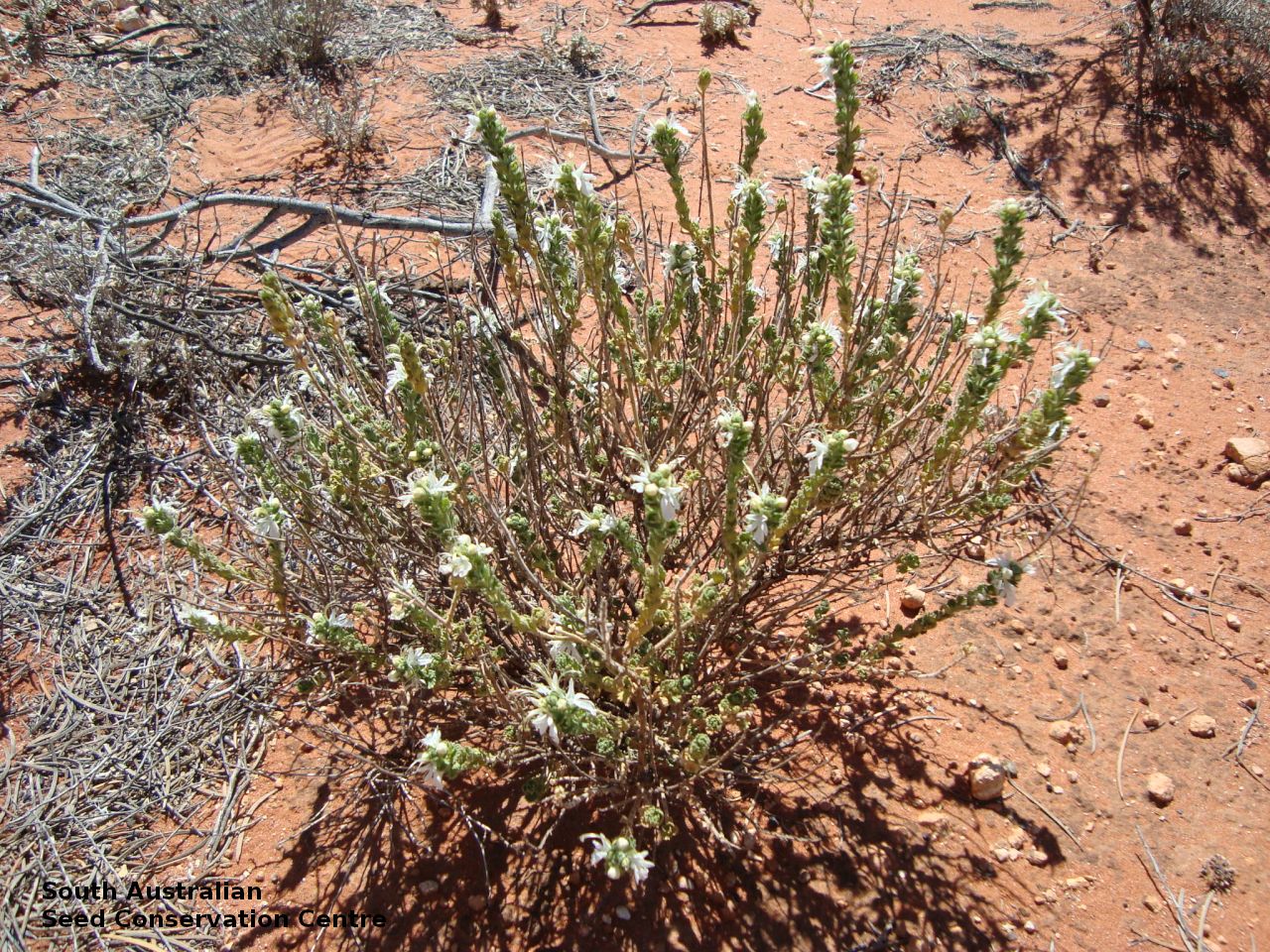
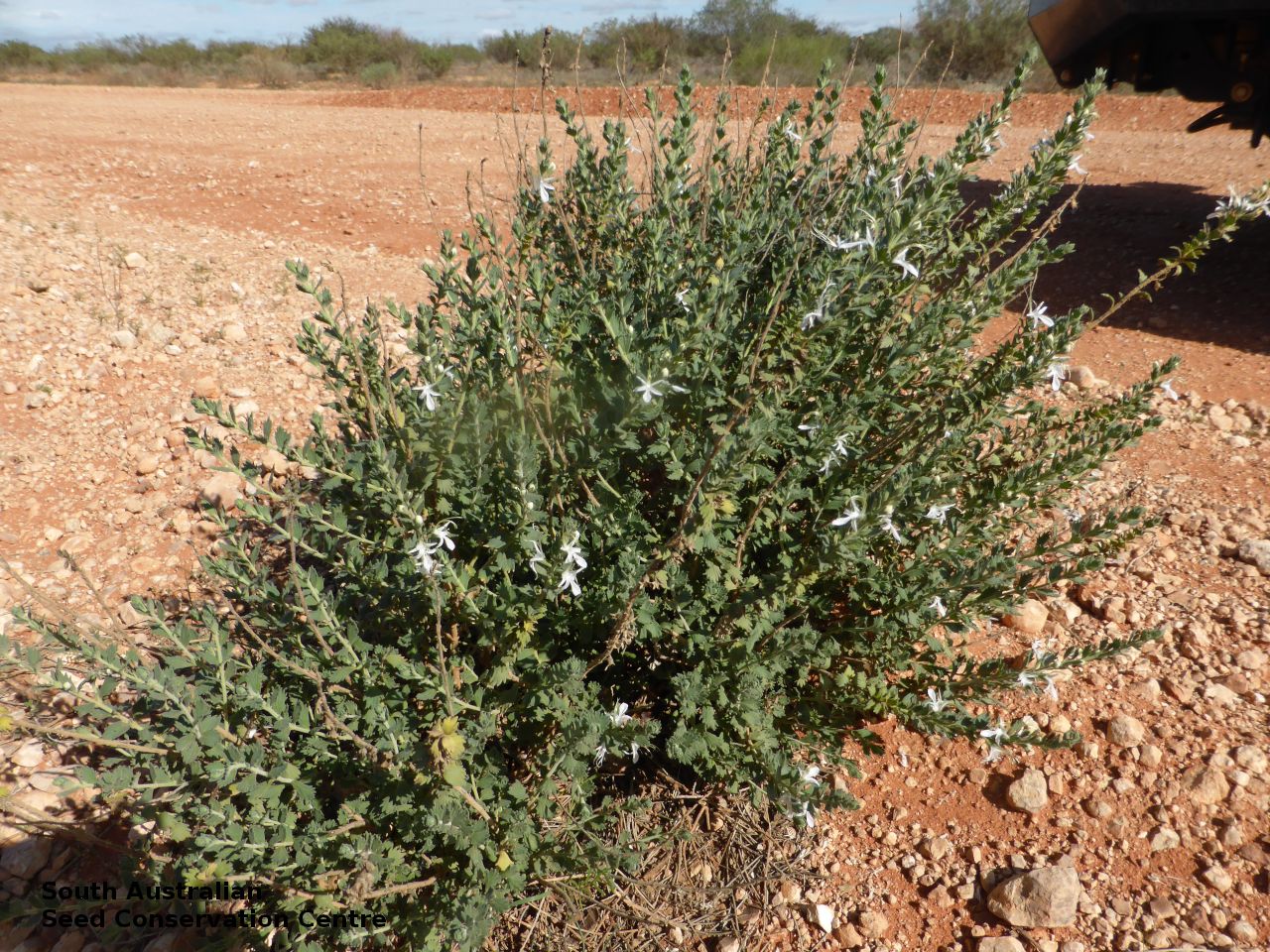
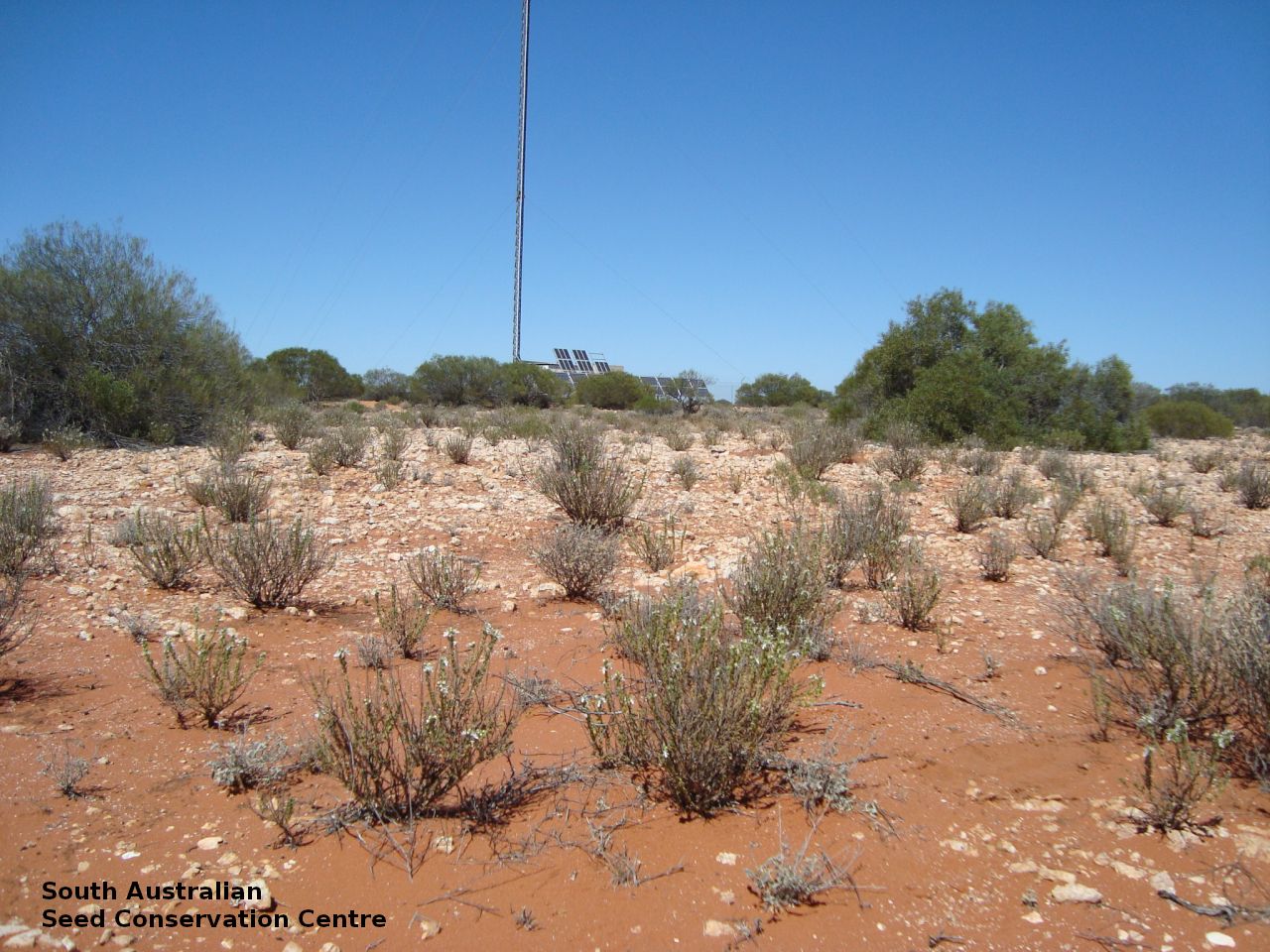
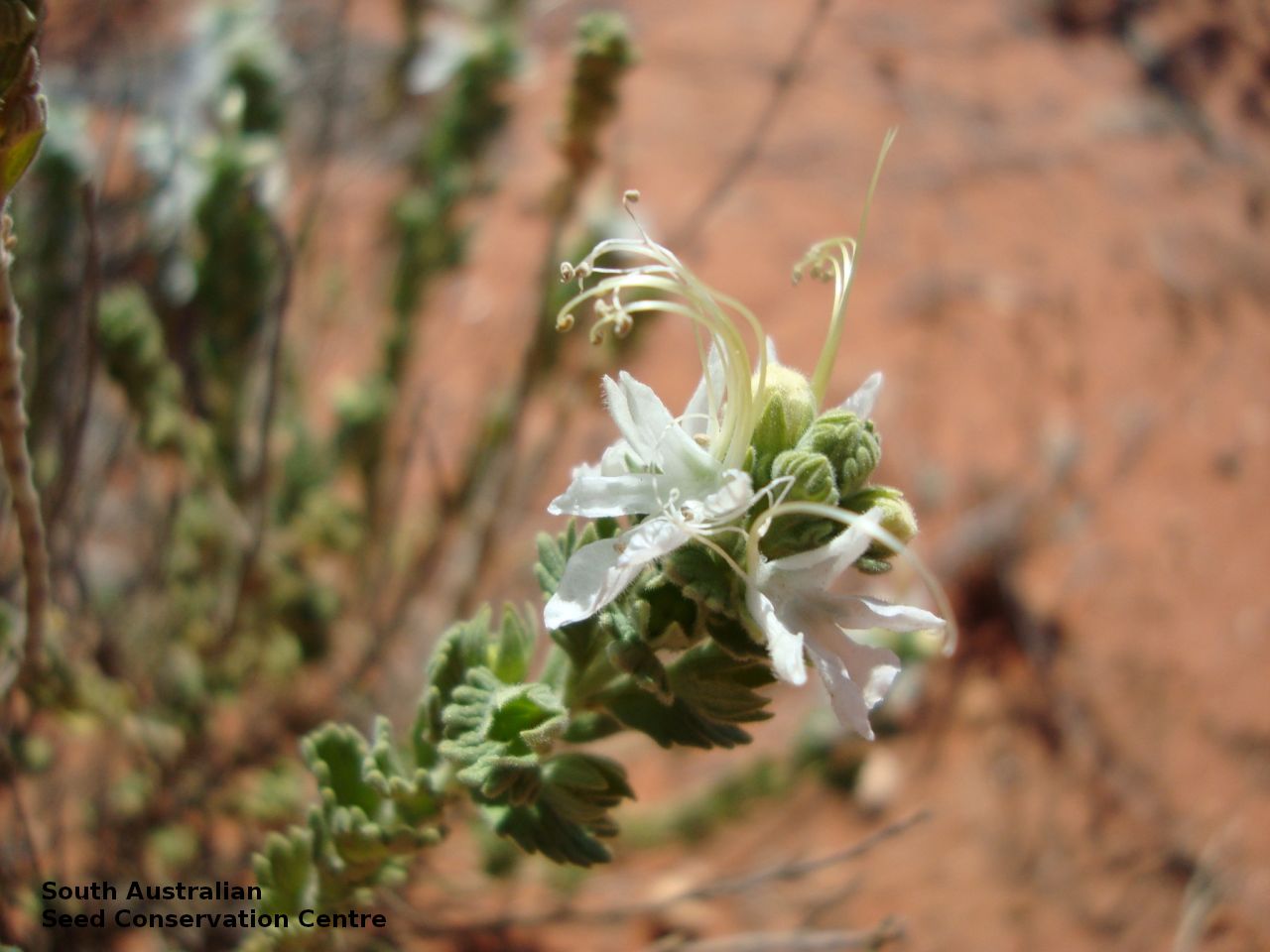
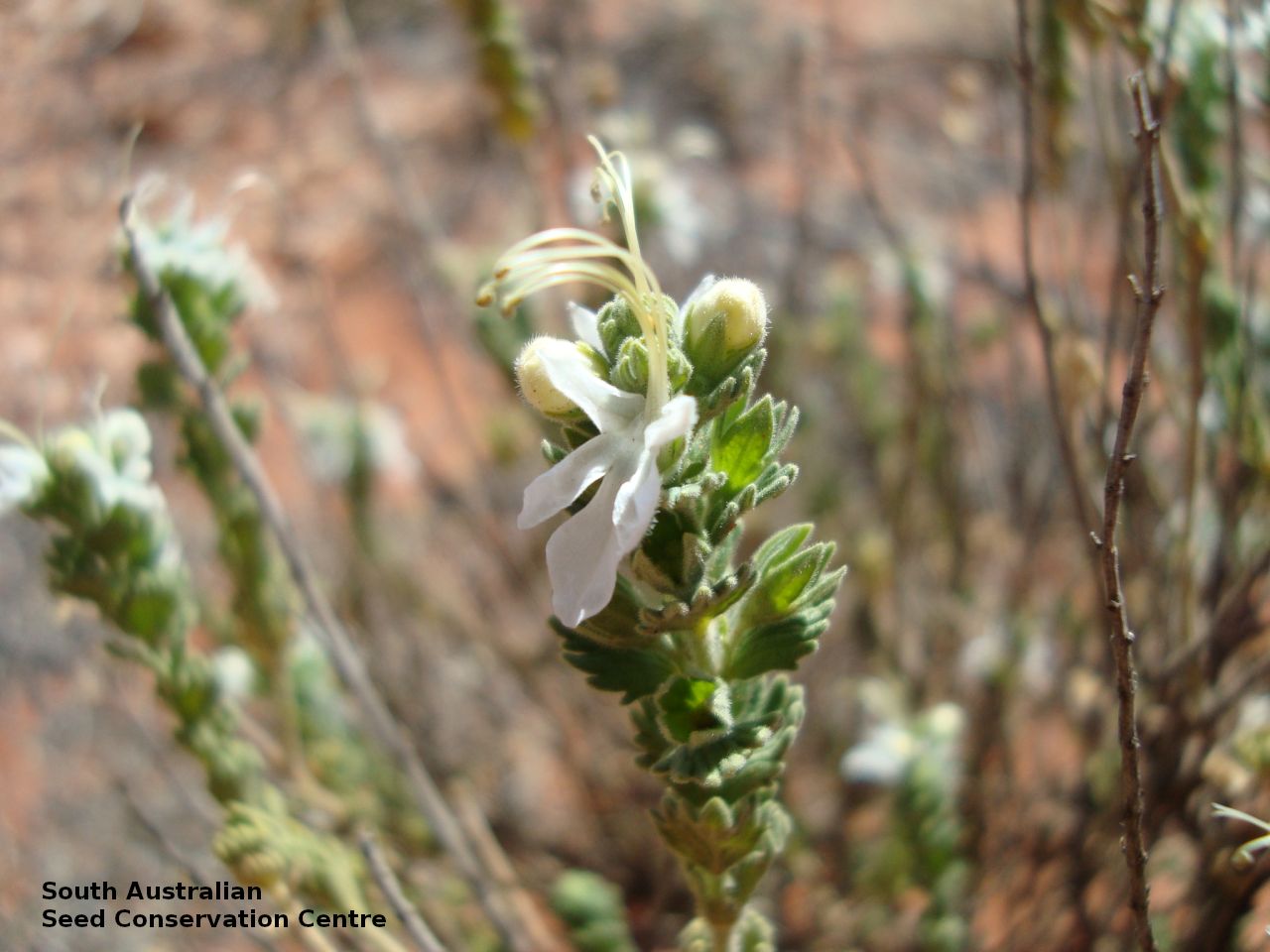
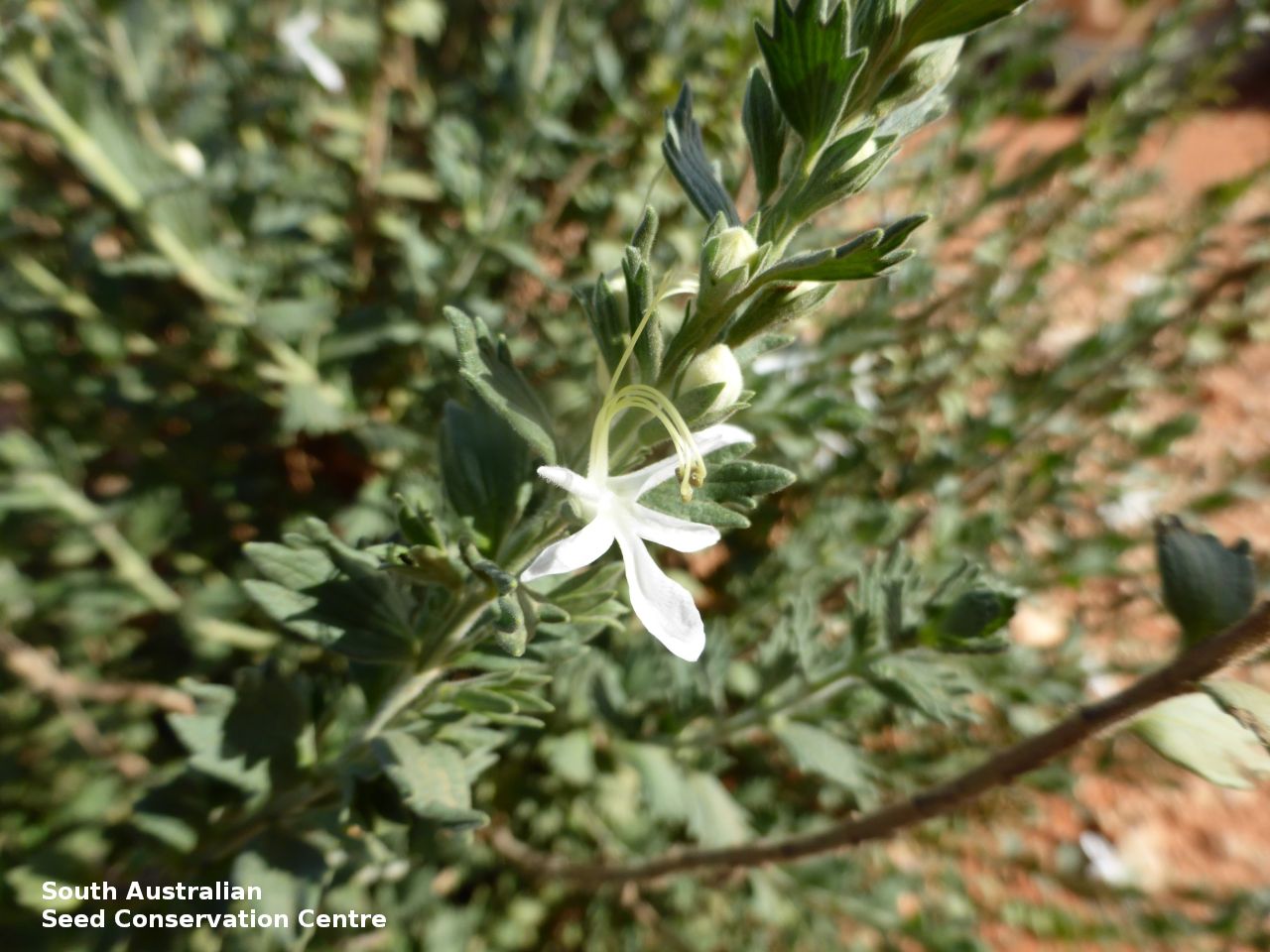
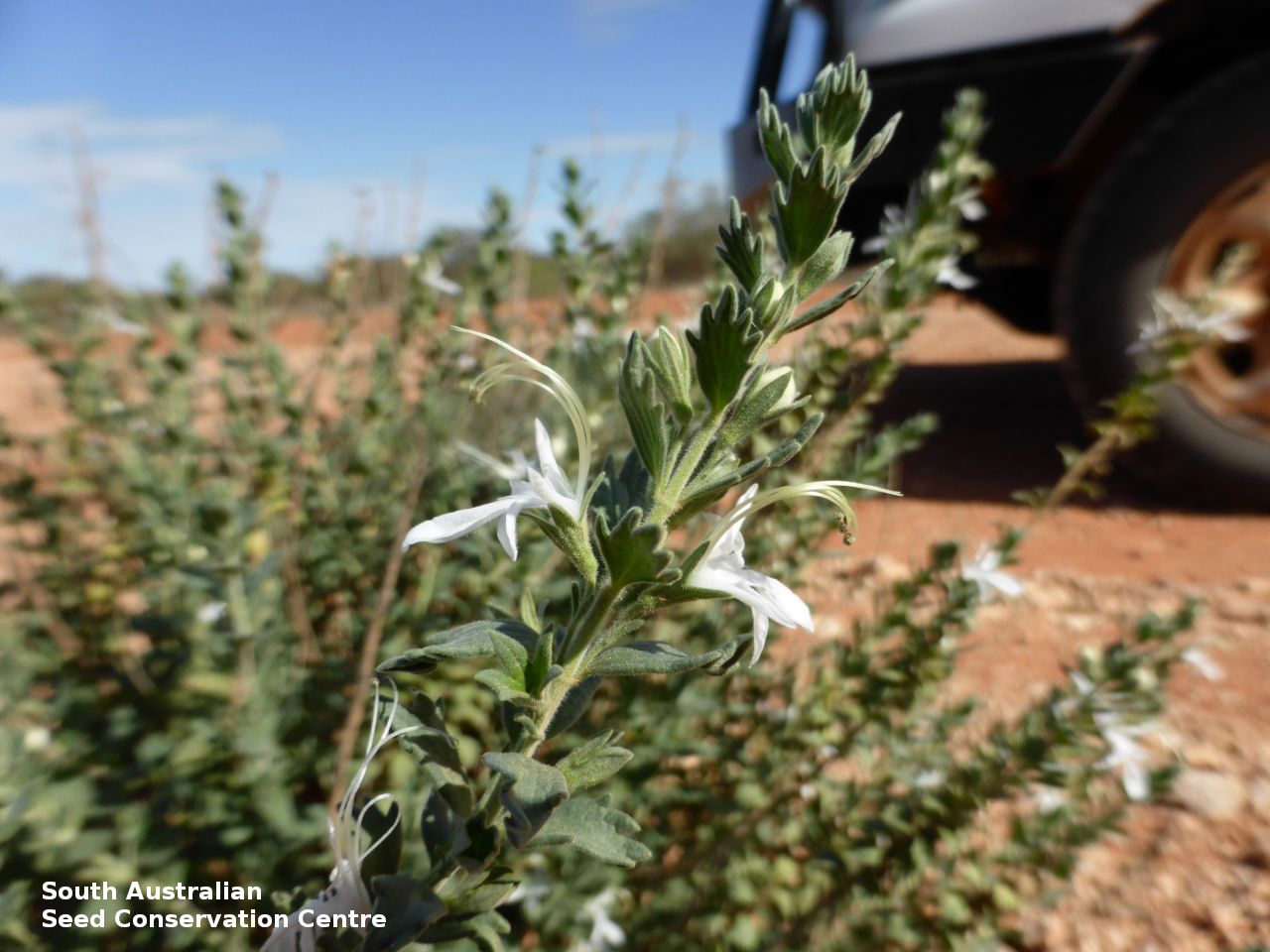
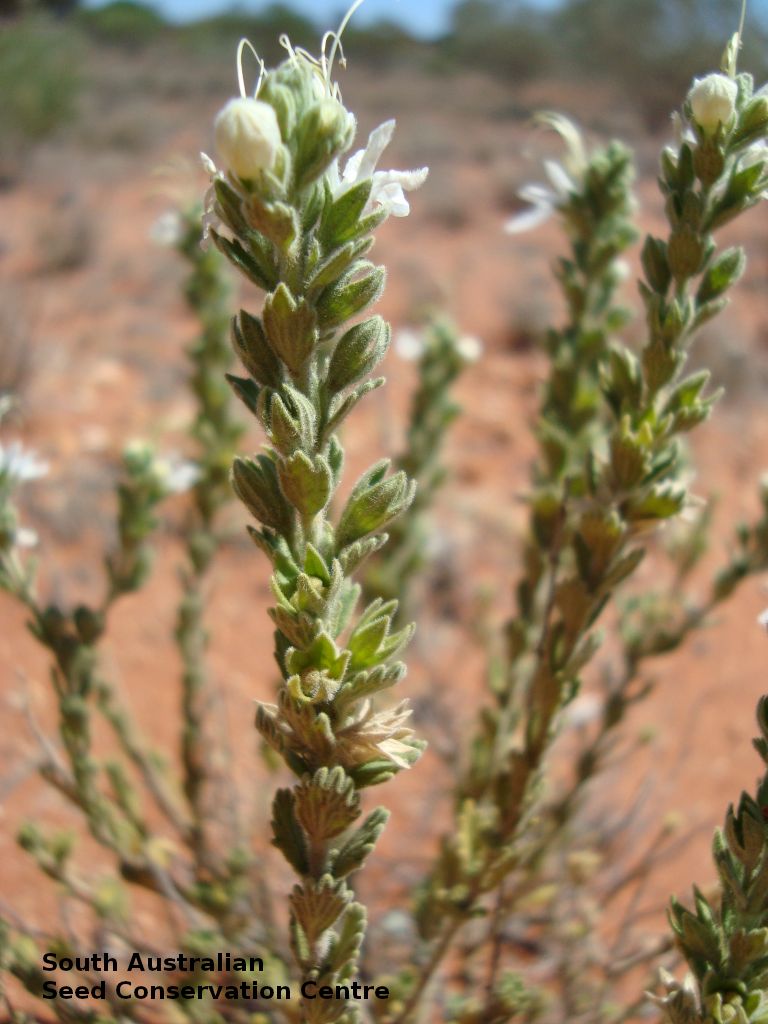
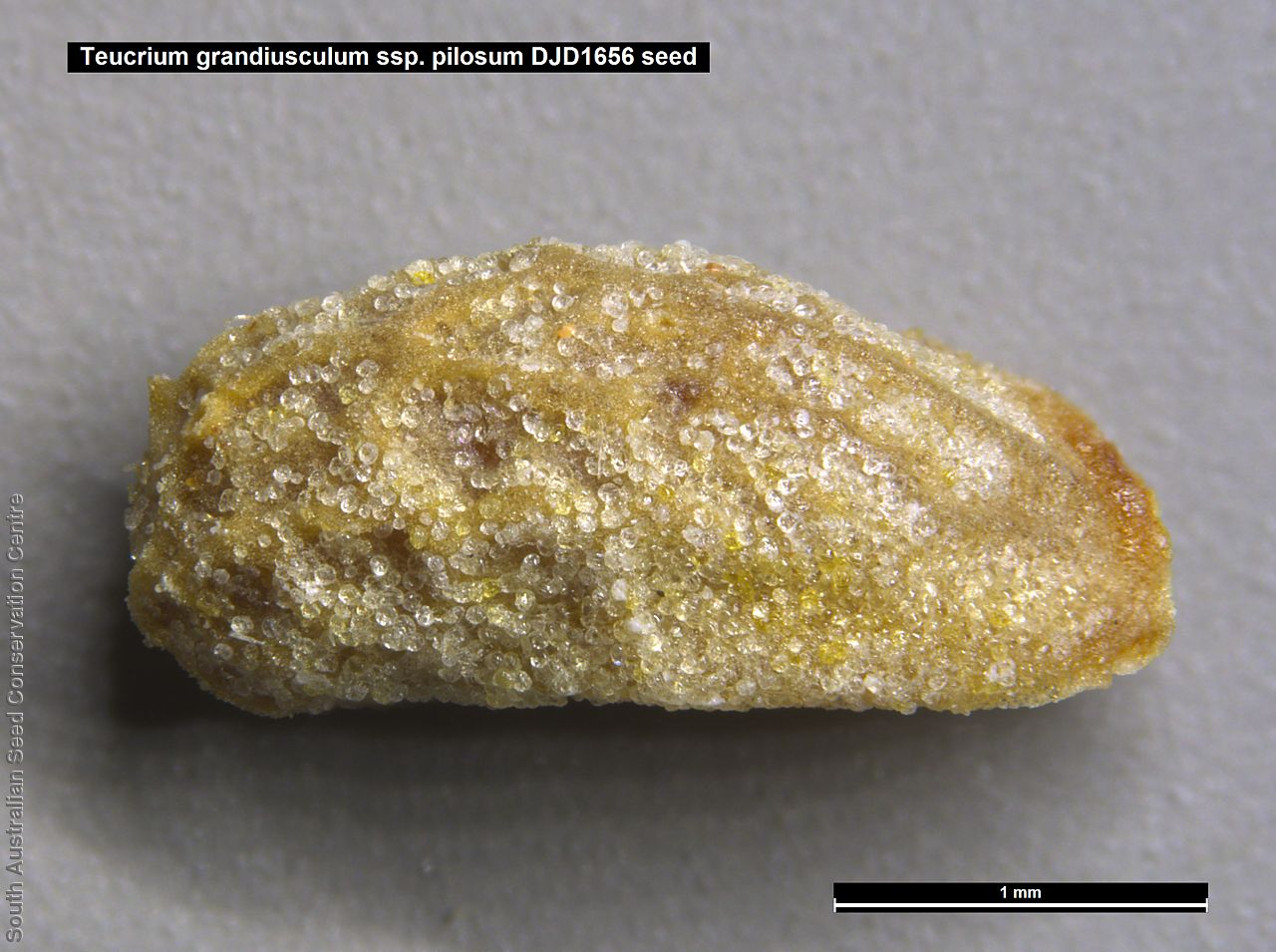
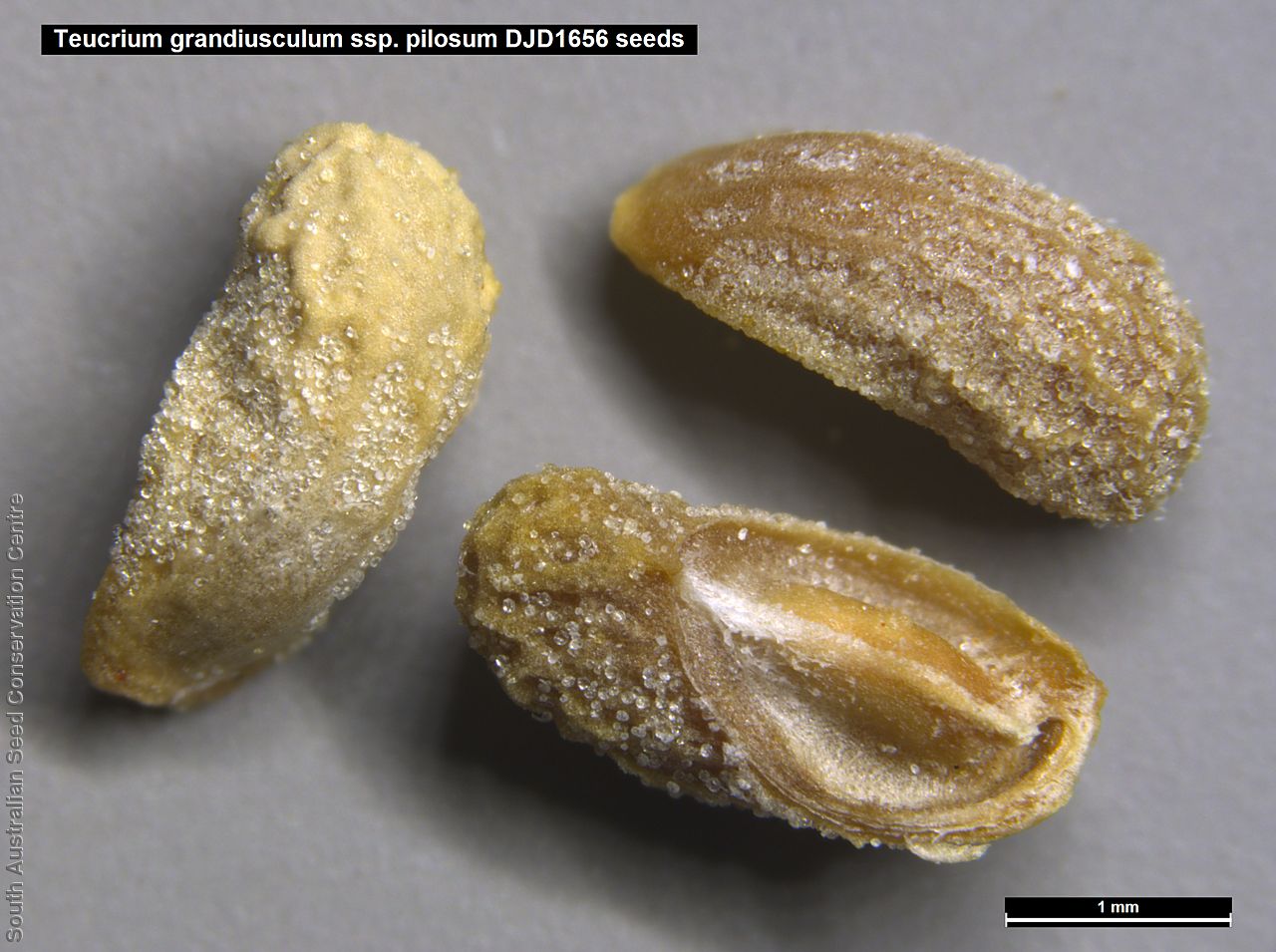
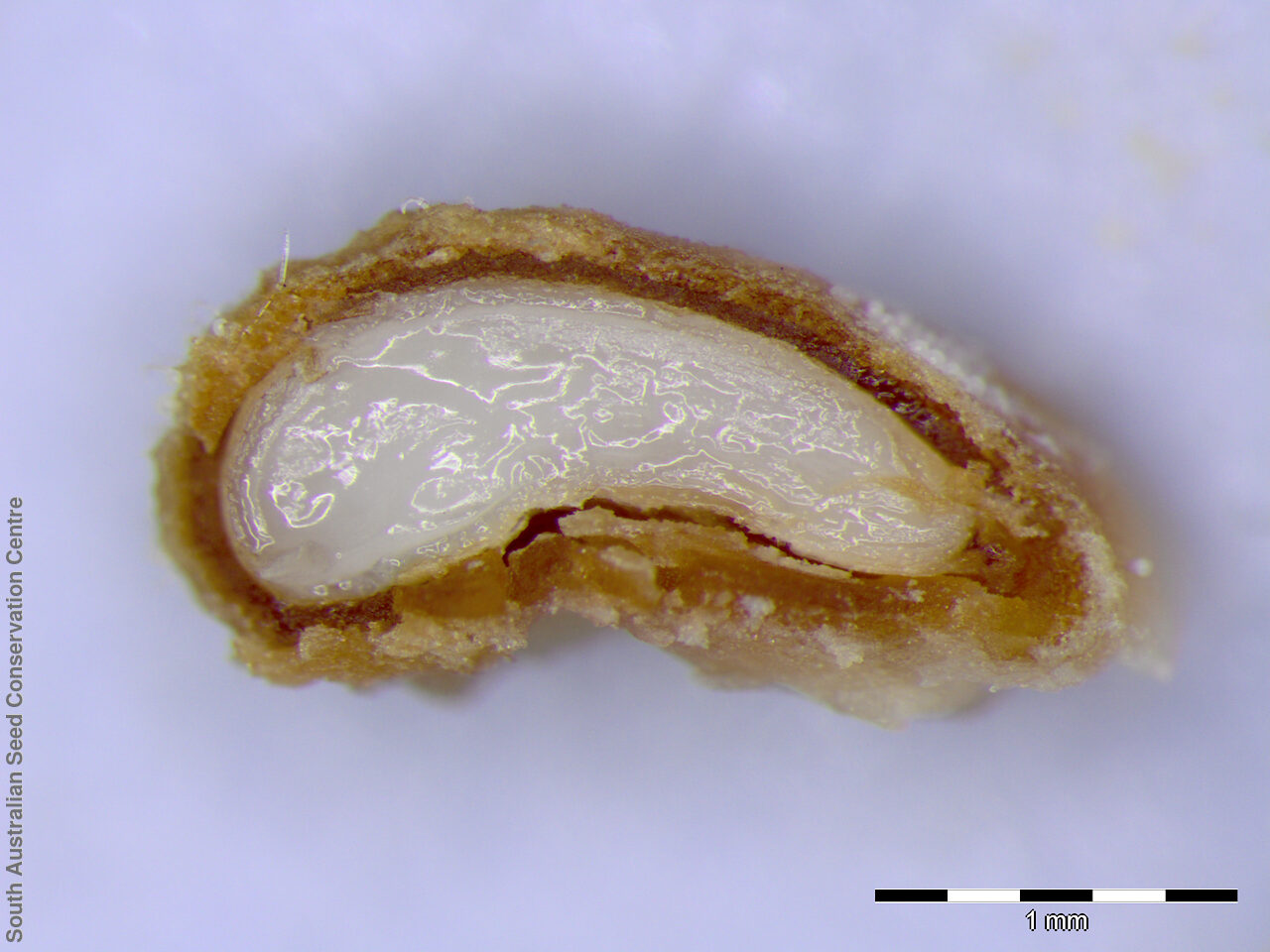
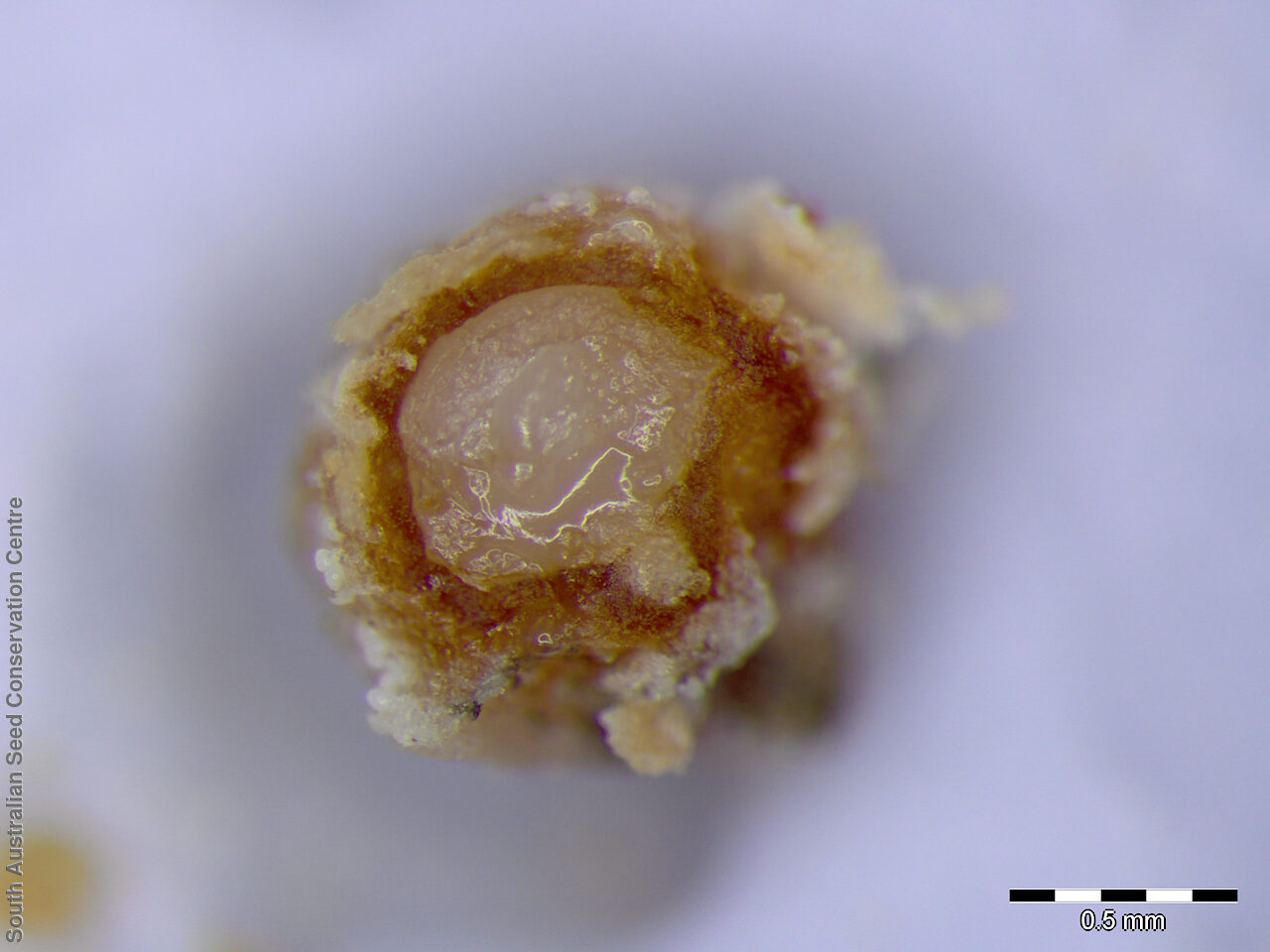

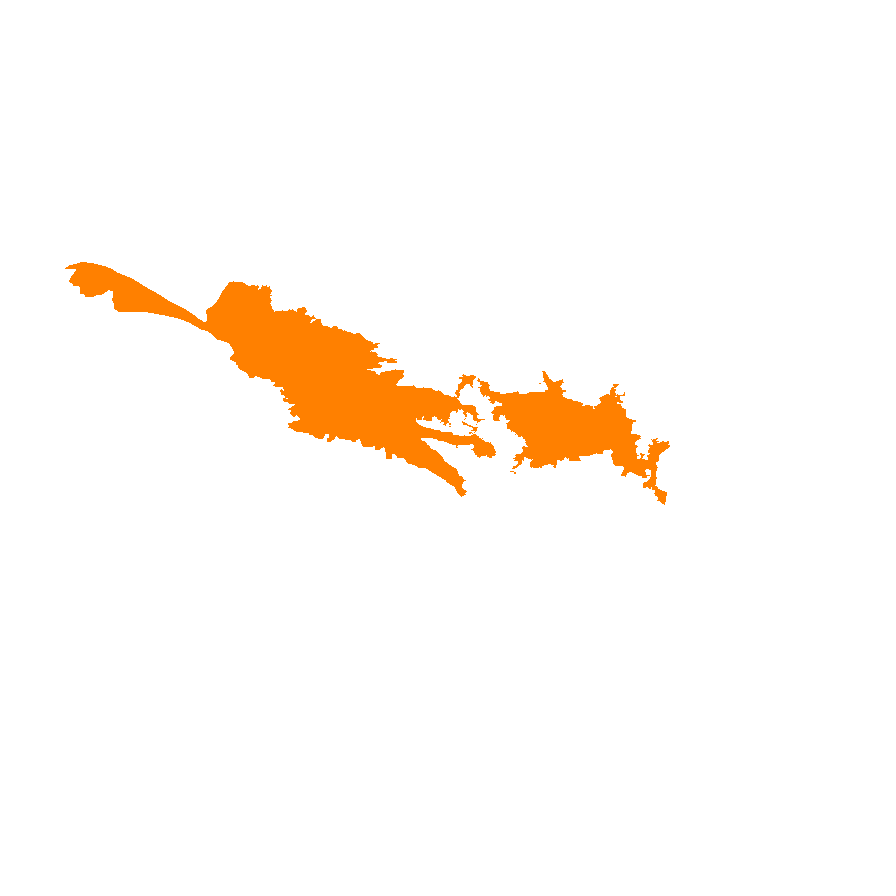
Etymology
Teucrium from the Greek 'teucrion', a name used by Dioscorides possibly after Teucer, a Trojan king who used the plant as a medicine. Grandiusculum a diminitave of the Latin 'grandis' meaning large; alluding to the flowers. Pilosum from the Greek 'pilos' meaning hair; referring to the hairy nature of the subspecies.
Distribution and status
Endemic to South Australia and found near Ooldea and Lake Everard. Native. Very rare in South Australia.
Herbarium regions: Nullarbor, Gairdner-Torrens, Eyre Peninsula
NRM regions: Alinytjara Wilurara, South Australian Arid Lands
AVH map: SA distribution map (external link)
Plant description
Perennial shrub to 80 cm high with quadrangular stems. Leaves covered in hairs and with numerous serrations at the tip. Flowers are white with 2 petals up and 3 petals down along a spike appearing in spring. This sub-species can be distinguished from the other sub-species (T. grandiusculum ssp. grandiusculum) by having denser and longer hairs along the stems. Fruits are brown capsules with up to four segments, each containing a seed. Seeds are small pale brown convex seeds to 2.5 mm long and 1.5 mm wide, covered in short hairs and with a plug at one end. Seed embryo type is linear fully developed.
Seed collection and propagation
Collect seeds between November and December. Collect capsules that are large, hard and turning brown. These will contain developed seeds. Collect more than required as some of the seeds will be empty and not viable. Place the capsules in a tray and leave to dry for a week. Then rub the capsules gently with a rubber bung to dislodge the seeds from the capsules. Use a sieve to separate the unwanted material. Some of seeds will be empty. Use an aspirator to siphon off the lighter, non-viable seeds from the heavier good seeds. Store the seeds with a desiccant such as dried silica beads or dry rice, in an air tight container in a cool and dry place. From one collection, the seed viability was average, at 70%. This species has morphophysiological dormancy and can be difficult to germinate.
| Location | No. of seeds (weight grams) | Number of plants | Date collected | Collection number Collection location | Date stored | % Viability | Storage temperature |
|---|---|---|---|---|---|---|---|
| BGA MSB | 2,300 (4.43 g) 2,300 (4.43 g) | 100+ | 4-Nov-2009 | DJD1656 Nullarbor | 25-Jan-2011 | 70% | -18°C |
Number of plants: This is the number of plants from which the seeds were collected.
Collection location: The Herbarium of South Australia's region name.
% Viability: Percentage of filled healthy seeds determined by a cut test or x-ray.